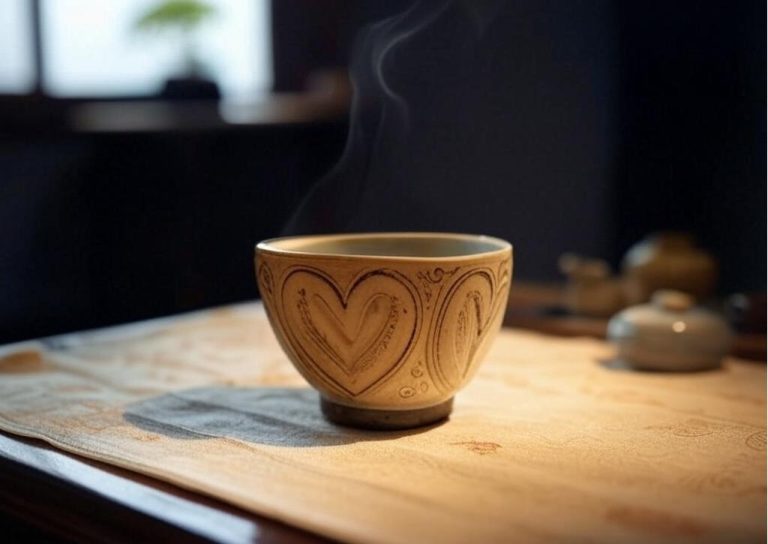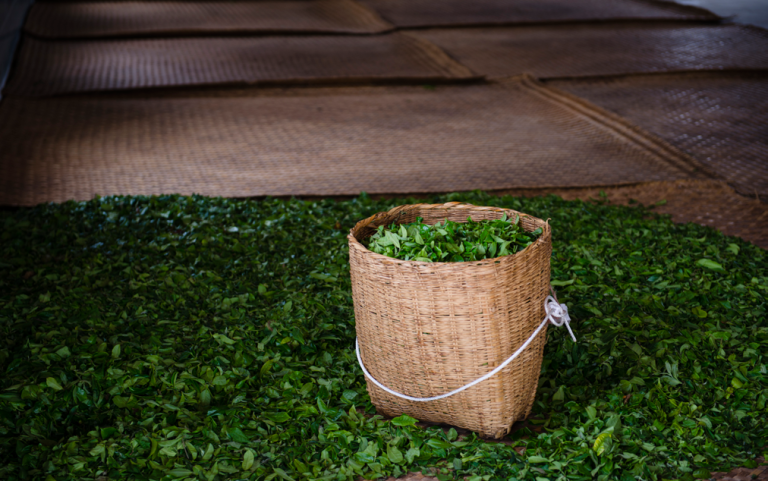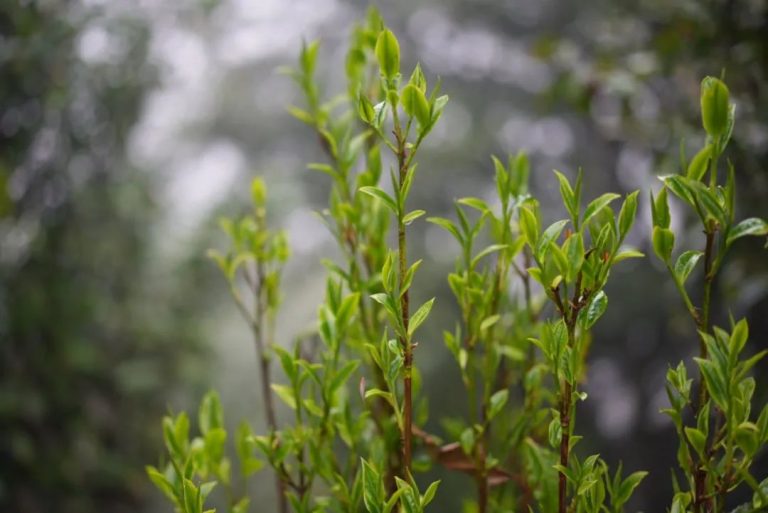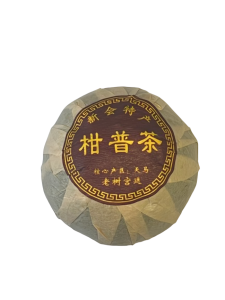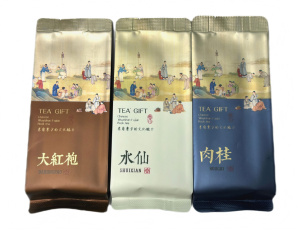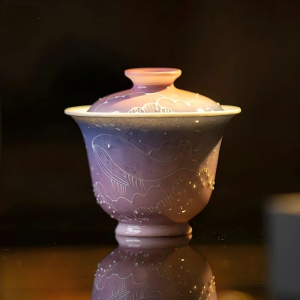
Pu erh tea, a distinctive category of fermented tea, hails from the Yunnan province in southwestern China, a region renowned as the birthplace of tea cultivation. Its history stretches back over 1700 years, with evidence suggesting its consumption and trade as early as the Eastern Han Dynasty. Unlike most other oxidized teas, Pu-erh undergoes a unique post-fermentation process, often involving microbial activity, contributing to its distinctive character. Historically, this tea was a significant commodity, traded along the ancient Tea Horse Roads that connected China with Tibet and other parts of Asia.
In recent years, Pu erh tea has garnered increasing attention in the Western world, often lauded for its potential health benefits. Some enthusiasts even view aged Pu-erh as a “drinkable antique,” appreciating its evolving flavors and potential increase in value over time, much like fine wine. However, with this growing popularity comes a host of myths and misunderstandings surrounding its health properties. This article aims to delve into the truth behind these claims, separating fact from fiction based on available research and providing a clearer understanding of what Pu-erh tea can and cannot offer in terms of health benefits.
Unveiling the Truth: Debunking Common Myths About Pu Erh Tea’s Health Benefits
Myth 1: All Pu Erh tea tastes the same.
This is a common misconception, as the world of Pu-erh tea is remarkably diverse. The tea is broadly categorized into two main types: raw (sheng) and ripe (shou). Sheng Pu-erh typically starts with a profile that can be bitter and astringent, gradually mellowing into a sweeter, more nuanced taste as it ages. On the other hand, Shou Pu-erh undergoes an accelerated fermentation process, resulting in a smoother, often earthier flavor, sometimes accompanied by notes of wood or spring honey. Furthermore, the taste is significantly influenced by the tea’s origin, a concept known as terroir, with different mountains and regions within Yunnan province imparting unique characteristics to the leaves. The aging process itself further contributes to the complexity of the flavor, with teas evolving over years or even decades. Finally, the specific processing techniques employed by tea masters also play a crucial role in shaping the final taste and aroma.
Myth 2: Pu Erh tea is caffeine-free
Contrary to this belief, Pu-erh tea does contain caffeine. The amount of caffeine in a cup of Pu-erh can vary, typically ranging from 30 to 100 milligrams, depending on factors such as the strength of the brew and the specific type of Pu-erh. While this is generally less than the caffeine content in a standard cup of coffee, which ranges from 95 to 200 milligrams, it is certainly not caffeine-free. Interestingly, ripe (shou) Pu-erh may contain slightly higher levels of caffeine compared to raw (sheng) Pu-erh due to the microbial fermentation process involved in its production. However, the caffeine content can also decrease as the tea ages.
Myth 3: Pu Erh tea is a recent invention.
The tradition of Pu-erh tea dates back much further than a recent invention. Its history spans over a millennium, with roots in the Tang Dynasty (618-907 CE). It gained significant popularity during the subsequent Ming and Qing Dynasties. While it is true that the cooked or ripe (shou) variety of Pu-erh tea is a more modern development, created in the 1970s to accelerate the fermentation process, the practice of consuming and aging raw (sheng) Pu-erh has been a part of Chinese tea culture for centuries.
Myth 4: The older the Pu Erh tea, the better its health benefits.
While it is often said that Pu-erh tea improves with age, developing a smoother and more complex flavor profile, this does not automatically translate to better health benefits with increasing age. The quality of Pu-erh tea is influenced by numerous factors, including the initial quality of the tea leaves, the processing methods used, and the conditions under which it is stored. While aging can enhance certain compounds, some research suggests that younger Pu-erh teas might even possess stronger antioxidant properties than their older counterparts. Furthermore, Pu-erh tea that is not stored properly can degrade over time, potentially developing undesirable flavors or even mold. Some experts believe that Pu-erh tea may not continue to improve significantly after about 25 years of aging.
Myth 5: Pu Erh tea has no side effects.
It is important to be aware that Pu-erh tea, like other teas, can have potential side effects, primarily due to its caffeine content. Excessive consumption, generally considered more than 4-5 cups per day, may lead to side effects such as sleep disturbances, nervousness, anxiety, increased heart rate, and gastrointestinal issues in some individuals. Furthermore, the caffeine in Pu-erh tea can potentially interact with certain medications. Individuals with pre-existing health conditions, such as anxiety disorders, heart problems, or irritable bowel syndrome, should exercise caution when consuming Pu-erh tea. As with any caffeinated beverage, moderation is key to enjoying Pu-erh tea responsibly.
Beyond the Myths: Real Health Benefits of Pu Erh Tea
While some claims about Pu-erh tea’s health benefits may be exaggerated, research does suggest several potential advantages. The tea is rich in antioxidants, particularly polyphenols, which can help protect the body against free radicals and oxidative stress. The fermentation process that Pu-erh undergoes can even enhance the concentration of certain beneficial antioxidants. Some studies suggest that Pu-erh tea may contribute to heart health by helping to manage cholesterol levels. Research indicates it might help lower LDL (“bad”) cholesterol and triglycerides, and potentially increase HDL (“good”) cholesterol.
Pu-erh tea has also been traditionally used to aid digestion, and some modern research supports this. It may help balance beneficial bacteria in the gut and promote a healthier gut microbiome. Studies on mice suggest that Pu-erh tea extract can alleviate intestinal inflammation by regulating gut microbiota. Furthermore, research indicates that Pu-erh tea may have a positive impact on brain health, potentially offering neuroprotection against glutamate-induced damage. Some studies also suggest potential benefits for liver health, such as promoting fat metabolism and reducing fat accumulation in the liver. While these findings are promising, it is important to note that research is ongoing, and more human studies are needed to definitively confirm all these benefits.
| Potential Health Benefit | Brief Description |
| Rich in Antioxidants | Contains polyphenols that help protect against free radicals and oxidative stress. |
| May Aid Weight Loss | Contains compounds that may boost metabolism and increase fat burning. |
| Promotes Heart Health | May help lower LDL (“bad”) cholesterol and triglycerides, and increase HDL (“good”) cholesterol. |
| Supports Digestive Health | May promote a healthy gut microbiome and aid in digestion. |
| Enhances Brain Health | May boost mental alertness and offer neuroprotective properties. |
| Improves Liver Health | May promote fat metabolism and reduce fat accumulation in the liver. |
| Supports Immunity | Rich in antioxidants and polyphenols that may help strengthen the immune system. |
| Promotes Bone Health | Animal studies suggest potential benefits for bone density. |
| Enhances Skin Health | Antioxidants may help protect skin and combat signs of aging. |
Choosing and Enjoying Authentic Pu Erh Tea

Selecting high-quality Pu-erh tea involves considering several factors. Authentic Pu-erh primarily comes from the Yunnan province in China, with specific regions like Lincang, Xishuangbanna, and Pu’er (formerly Simao) being particularly well-regarded. Within these regions, certain mountains are famous for producing high-quality leaves with unique characteristics. Pu-erh tea has two main types: sheng (raw) and shou (ripe), each with distinct processing methods and flavor profiles. The quality of the leaf itself is also important, with tea made from old arbor trees often considered superior to that from cultivated bushes. Authentic Pu-erh should have whole, intact leaves, and its aroma should be earthy, sometimes with hints of wood or dried fruit, but not fishy or moldy. Purchasing from reputable vendors who specialize in Pu-erh tea is recommended to ensure authenticity and quality.
| Feature | Sheng (Raw) Pu-erh | Shou (Ripe) Pu-erh |
| Processing | Slow, natural fermentation over the years | Accelerated fermentation through “wet piling” before compression |
| Fermentation | Age can, but changes are less dramatic than sheng | Accelerated fermentation over weeks to months |
| Aging | Improves significantly with age; can be aged for decades | Can age, but changes are less dramatic than sheng |
| Taste Profile | Initially bitter and astringent, develops complexity and sweetness with age; can be grassy, floral, or fruity | Earthy, smooth, mellow, sometimes with woody or sweet notes |
| Aroma | Fresh, floral, sometimes smoky when young; develops woody and complex aromas with age | Earthy, often with notes of wood, dried fruit, or damp forest floor |
| Color | Light green to golden yellow when young; darkens to amber and red with age | Dark reddish-brown to black |
| Caffeine | Generally lower than shou, but varies | Similar to green tea, sun-dried and compressed; ages naturally |
Proper storage is crucial for maintaining the quality of Pu-erh tea and aiding its aging process, if desired. Store the tea in a clean, odor-free environment with moderate humidity (around 60-70%) and a stable temperature between 65-85°F. Avoid direct sunlight and excessive airflow. For long-term aging of Sheng Pu-erh, it is best to store the cakes in breathable materials such as their original paper wrapper or in a bamboo tong. It is also advisable to keep raw and ripe Pu-erh stored separately to prevent cross-contamination of aromas.
Brewing Pu-erh tea can be done in various ways. For Western-style brewing, use about 1 teaspoon of leaves per 8 ounces of boiling water and steep for 2-5 minutes. Pu-erh leaves can typically be re-steeped multiple times. The traditional Gongfu method involves using a higher leaf-to-water ratio and shorter steeping times, typically 10-30 seconds, for multiple infusions in a Gaiwan or Yixing teapot. It is often recommended to rinse the leaves with hot water briefly before the first proper steep to awaken them and remove any impurities.
Embrace the Authentic Journey of Pu Erh Tea

In conclusion, while Pu-erh tea is indeed associated with various health benefits, it is essential to approach these claims with a discerning eye, separating well-founded research from common myths. While some studies suggest potential benefits for weight management, cholesterol levels, digestion, brain health, and liver function, further research, particularly in human subjects, is often needed to confirm these effects definitively. It is also crucial to be aware that Pu-erh tea contains caffeine and may have side effects for some individuals. By choosing authentic, high-quality Pu-erh tea from reputable sources, storing it properly, and brewing it thoughtfully, individuals can enjoy its unique flavors and potential health-promoting properties as part of a balanced and healthy lifestyle.
Ready to explore the rich flavors and potential benefits of authentic Pu Erh tea?
Discover Our Premium Pu Erh Tea Collection

